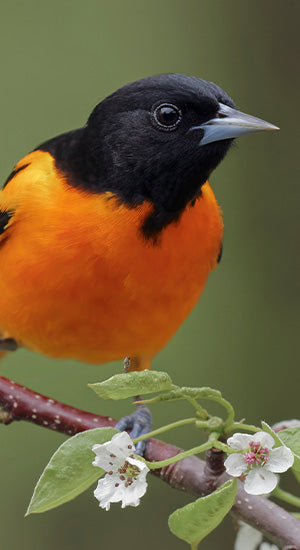
The ABCs of illness detection
Birds must be observed very carefully every day for subtle signs of illness. If several symptoms are present at the same time, contact your avian veterinarian immediately. Any stress can weaken a bird’s immune system, but because they disguise signs of sickness, you must know what to look for so you can catch problems early. Whenever possible, discreetly observe the bird. Your presence may cause them to act healthier than they actually are. The ABCs listed here should serve as warning signs.
Appearance
- Eyes: dull, glassed over, frequently closed or discharge present. Matting of feathers around eyes.
- Beak: overgrown or misshapen. Look for ridges directly beneath nares (nostrils).
- Cere and nares: discharge coming from nostrils or matting of feathers around the area.
- Mouth: open-mouth breathing; slimy, mucous-filled mouth; white plaques seen in open mouth.
- Wings: dull feathering with many stress bars. Any bleeding. One wing hanging lower than the other.
- Feet and legs: scabs, poor scaling, flaking. Missing toes (not indicative of disease, but previous trauma).
- Feathers: fluffed, frayed or tattered, large featherless areas. Multiple breaks in feather construction. Tail bobs when bird is breathing.
- Body: holds head in strange position or holds body in strange position, looks uncomfortable or has convulsions, extremely thin.
- Vent (cloaca): pasty vent, matted feathers around vent.
Behavior
- Attitude: sleepy acting, very inactive, not eating or drinking. Sits on floor of cage or is frequently picked on by cage mates.
- Rarely vocalizes, frequently sits with beak tucked under wing and foot pulled up into body.
- Inactivity; no playing, climbing or flying.
- Does not eat or drink. May sit at feeder but not seen eating.
- Stands for long periods with beak hanging open on cage bars.
- Seldom or never preens its feathers.
Coprology (The Study Of Droppings)
- Droppings are very scant (absent), are different colors, or are very watery. Watery droppings are normal for the first 24 hours after a change of environment, or a change in diet.
- Droppings do not contain normal fecal portion, urate portion and urine portion, or one of the three is abnormally large.
- Changes in dropping color. Consistency and frequency must be monitored closely.

|
A bright-green color change may be a sign of anorexia, ulcers, disease, viral infection or toxicity. |
 |
Diarrhea is an abnormal frequency and liquidity of the feces usually caused by bacteria, parasites, viruses, fungi or chlamydia. |
 |
Yellow droppings may indicate chlamydia, Pacheco’s virus or other viral infection. Black or red droppings may indicate an ulcer, intestinal bleeding or an internal injury. |
Signs Of A Healthy Bird
- The eyes are bright and clear. No discharge or matting of feathers is present.
- The beak, mouth, cere and nostrils are smooth and free of discharge.
- There should be no plaques or white nodules in mouth and no labored or open-mouth breathing.
- The bird occasionally vocalizes and readily eats and drinks.
- Wings and feathers are smooth, not frayed or tattered. There is no bleeding, and the bird will exhibit normal preening habits.
- The tail remains still while the bird is breathing
- Area around the vent (cloaca) is clean, and feathers are not matted.

Many thanks to Kaytee for the wonderful information, you can purchase Kaytee branded products here 












